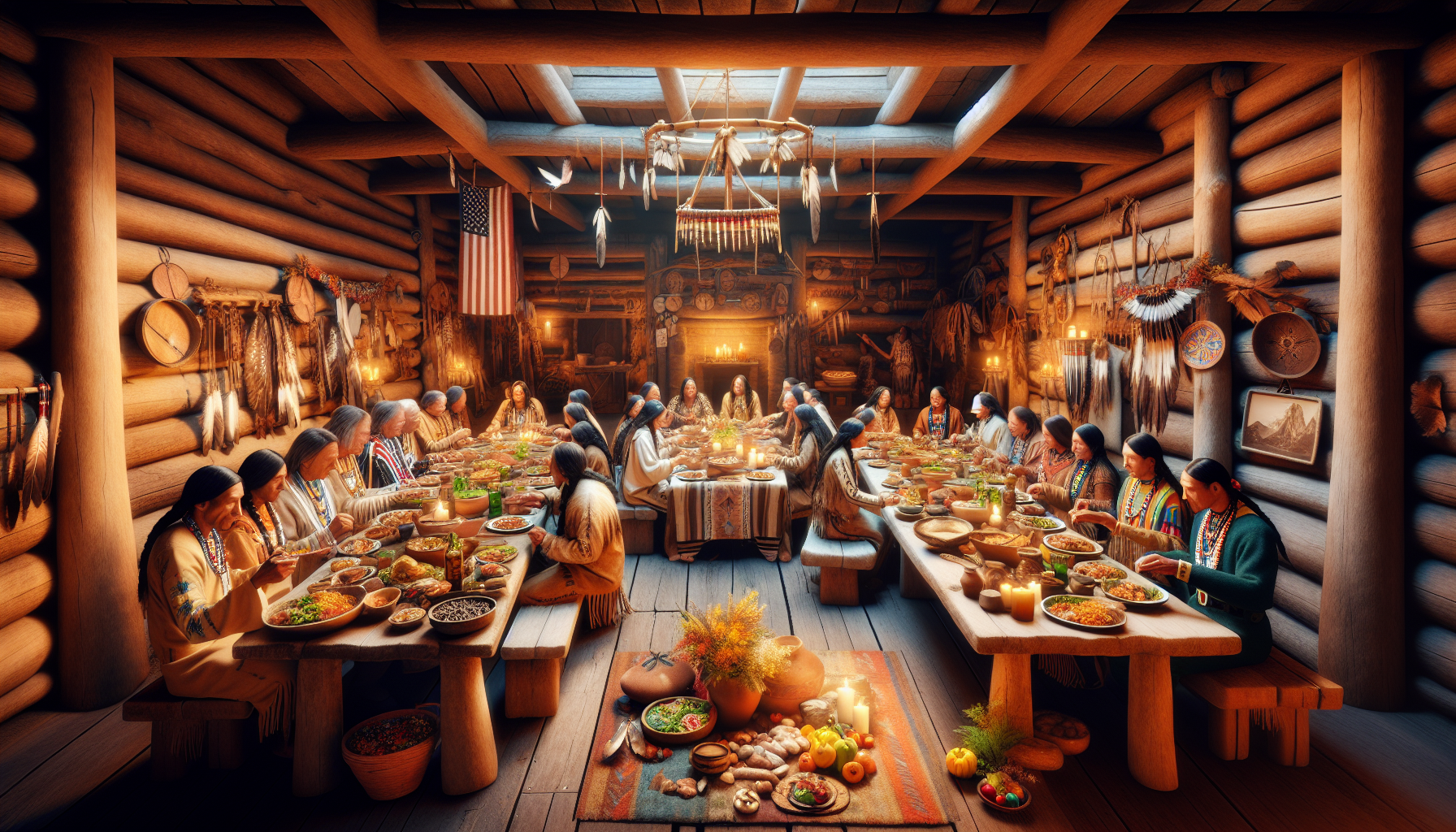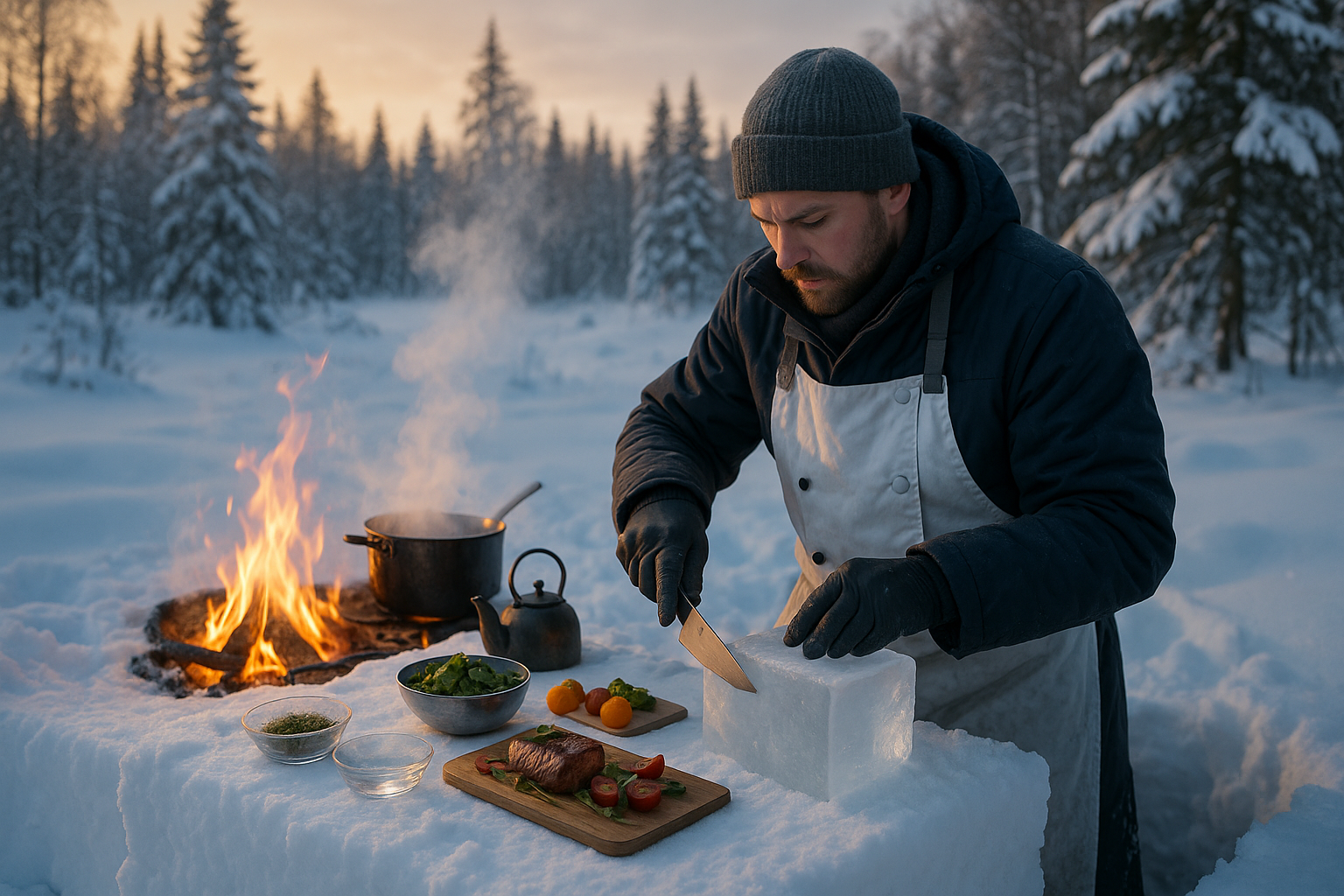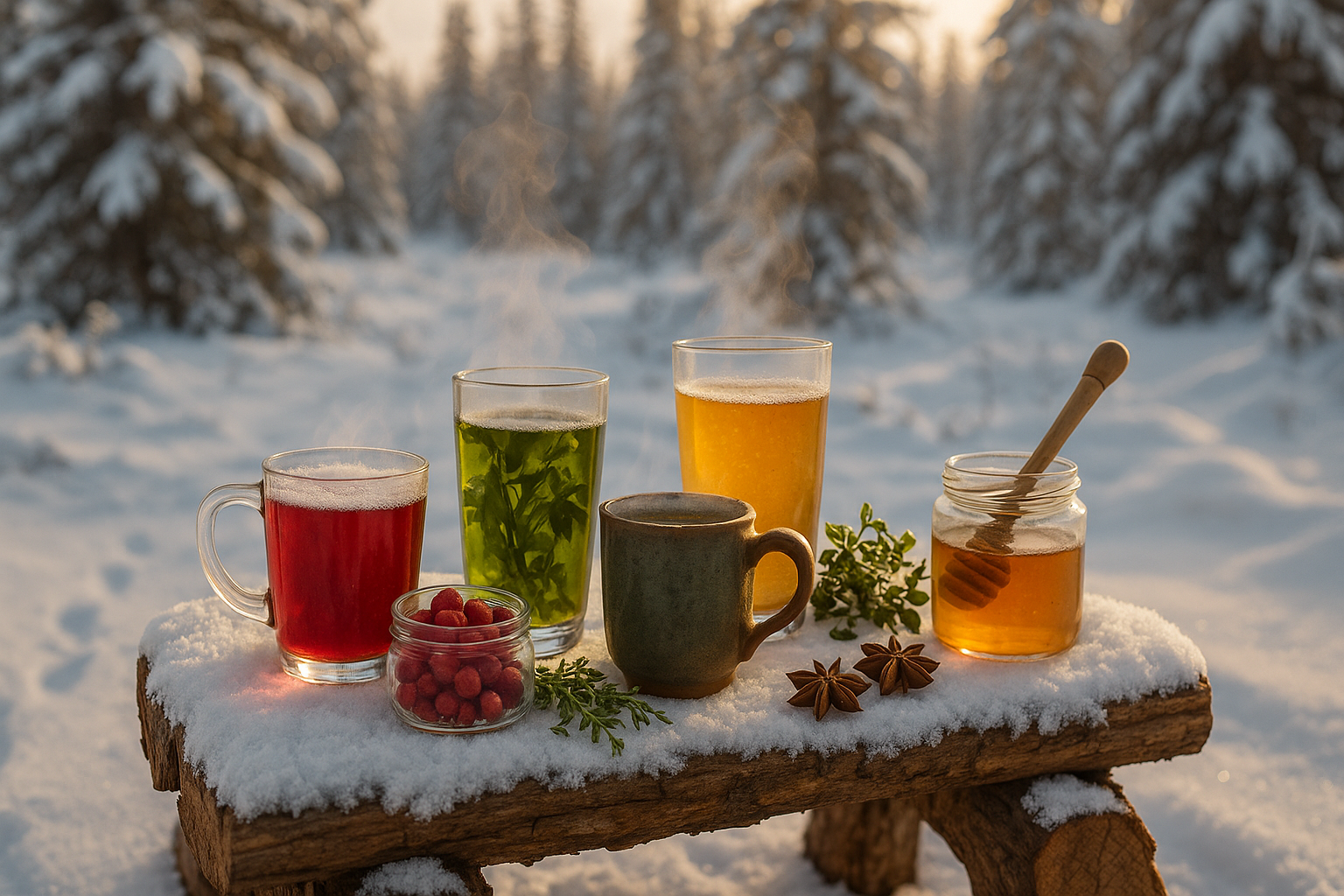In the heart of North America, long before skyscrapers pierced the skyline and highways carved through the wilderness, the land was a tapestry of diverse indigenous cultures, each with its own vibrant traditions and rich histories. Among these, the longhouse—a communal home shared by multiple families—stood as a symbol of unity, community, and cultural endurance. But beyond its architectural significance, the longhouse was a hub of culinary expression and tradition, where feasting was not merely about nourishment but an integral part of the social fabric. Welcome to “Indulge in Tradition: Feasting in the Longhouse – A Culinary Journey Through Native American Culture,” where we invite you to explore the flavors, stories, and customs that have been passed down through generations, a testament to the resilience and creativity of Native American peoples.
As we embark on this journey, you’ll discover that a feast in the longhouse is more than just a meal; it is an experience that weaves together community, spirituality, and identity. We’ll delve into the variety of foods that graced these gatherings, from the hearty stews and freshly caught game to the corn, beans, and squash—the “Three Sisters” that sustained many tribes. We’ll explore the seasonal rhythms that dictated these feasts and how they aligned with agricultural cycles and spiritual ceremonies. Furthermore, we’ll uncover the stories behind these dishes, tales of ancestors and the land, and the techniques and skills honed over centuries that continue to influence Native American cuisine today.
The Longhouse Tradition: A Glimpse into Native American Culture
In the heart of Native American communities, the longhouse stands as a beacon of tradition, unity, and culture. These remarkable structures, with their elongated frames and communal living spaces, are more than just architectural feats; they are the centerpieces of indigenous social and cultural life. The longhouse is where generations have gathered to share stories, songs, and most importantly, food. This tradition of communal feasting is a rich tapestry woven with threads of history, spirituality, and social connection.
Longhouses were typically constructed using locally sourced materials, which varied depending on the region. For instance, tribes in the northeastern United States and Canada, such as the Iroquois, commonly used elm bark and wooden frames, while those in the Pacific Northwest utilized cedar. The choice of materials not only reflects the environmental adaptation but also a deep respect for the natural world, a core tenet of many Native American belief systems. These structures could accommodate multiple families, often serving as the hub for community activities and celebrations.
The culinary practices within the longhouse are as diverse as the tribes themselves, each with unique dishes that are a testament to their ancestral heritage. Feasting in the longhouse is not merely about sustenance; it is a ceremonial act that reinforces community bonds and pays homage to the spirits of the land and ancestors. These feasts often feature traditional foods such as corn, beans, and squash – known as the Three Sisters – which hold significant cultural symbolism.
The Role of Food in Ceremonial Gatherings
Food has always played a pivotal role in ceremonial gatherings across Native American cultures. These events are much more than meals; they are spiritual and social occasions that serve to strengthen the community’s ties and connect them with their heritage. Each dish served during these feasts carries a story, a memory, or a blessing, enriching the communal experience with layers of meaning.
One of the most celebrated ceremonial gatherings is the powwow, which often includes vibrant dance, music, and of course, feasting. During these events, food is shared freely, reflecting the values of generosity and hospitality that are central to many Native cultures. Traditional dishes like frybread, buffalo stew, and roasted corn are commonly enjoyed, offering a taste of history with every bite.
In addition to powwows, other ceremonies such as the Green Corn Festival highlight the spiritual significance of food. This particular festival, celebrated by tribes like the Muscogee and Seminole, marks the corn harvest and is accompanied by rituals that thank the earth for its bounty. Through such ceremonies, food becomes a medium for expressing gratitude and maintaining harmony with the natural world.
Culinary Diversity Among Tribes
The culinary diversity among Native American tribes is immense, each with unique ingredients and cooking techniques that reflect their geographical and cultural landscapes. For example, the Inuit in the Arctic regions rely heavily on seal, whale, and fish, which are vital for survival in harsh climates. In contrast, the Hopi and Navajo of the Southwest incorporate beans, squash, and chilies into their diets, utilizing ingredients that thrive in arid conditions.
Exploring the culinary traditions of various tribes unveils a rich tapestry of flavors and cooking methods. For instance, the Pacific Northwest tribes are known for their salmon bakes, where the fish is cooked over an open flame or smoked, preserving it for long periods. Meanwhile, the Pueblo peoples of the Southwest have perfected the art of creating hominy stew, a hearty dish made from dried corn kernels treated with lime.
As we delve into these culinary traditions, it becomes evident that food is not just about sustenance; it’s an integral part of the cultural identity. The sharing of meals in the longhouse is an embodiment of the values of community, respect for nature, and spiritual connection. Each dish tells a story, serving as a reminder of the resilience and adaptability of Native American cultures.
Comparative Table of Traditional Dishes
To better understand the diverse culinary practices among Native American tribes, let’s examine a comparative table of traditional dishes:
| Region | Tribe | Traditional Dish | Main Ingredients |
|---|---|---|---|
| Northeast | Iroquois | Three Sisters Soup | Corn, Beans, Squash |
| Southwest | Navajo | Navajo Tacos | Frybread, Beans, Ground Beef |
| Pacific Northwest | Haida | Smoked Salmon | Salmon, Cedar Planks |
| Arctic | Inuit | Muktuk | Whale Skin, Blubber |
Each dish in the table above reflects the environmental adaptations and cultural heritage of the respective tribes. The use of local ingredients not only showcases the resourcefulness of these communities but also their deep connection with the land.
Preservation of Tradition Through Modern Initiatives
In recent years, there has been a resurgence in efforts to preserve and revitalize traditional Native American culinary practices. These initiatives are crucial for maintaining cultural heritage and promoting healthier lifestyles among indigenous communities. Organizations and chefs are actively working to reintroduce traditional foods into modern diets, emphasizing sustainability and cultural pride.
One such initiative is the Native American Food Sovereignty Alliance, which focuses on promoting indigenous food systems and self-determination. By encouraging the cultivation of traditional crops and the revival of ancient cooking techniques, these efforts aim to restore a sense of identity and community pride among Native populations. Moreover, these initiatives are addressing issues of food security and health disparities faced by many indigenous communities.
Modern Native American chefs, like Sean Sherman, known as “The Sioux Chef,” are playing a pivotal role in this movement. By creating contemporary dishes that highlight traditional ingredients, they are bringing Native American cuisine to a broader audience. Sherman’s work has been instrumental in raising awareness about the rich culinary heritage of Native Americans and the importance of food sovereignty.
Watch This Video on Native American Cuisine
To gain further insight into the world of Native American culinary traditions, watch this informative video on YouTube: “Exploring Native American Cuisine” by Indigenous Food Lab.
Through these modern initiatives and the continued practice of traditional feasting in the longhouse, the vibrant culinary heritage of Native American tribes is being preserved and celebrated for future generations to enjoy.
- Experience the rich flavors of Three Sisters Soup and other traditional dishes.
- Learn about the spiritual and cultural significance of food in Native American ceremonies.
- Discover modern efforts to preserve and promote indigenous culinary practices.

Conclusion
Conclusion: Embracing the Culinary Tapestry of Native American Culture
As we journey through the rich culinary traditions of Native American culture, it’s clear that the longhouse feast is not just a meal but a tapestry of history, community, and sustainability. The longhouse, serving as a central gathering place for various tribes, symbolizes the unity and continuity of Native American heritage. It’s a space where the echoes of ancient customs meet the vibrancy of contemporary celebrations, showcasing a remarkable fusion of the past and present.
Throughout this article, we have explored the profound connection between Native American cuisine and the land. From the hearty corn soup that tells tales of maize cultivation to the delicate fry bread representing resilience and adaptation, each dish embodies stories that have been passed down through generations. This culinary journey is not merely about indulging in flavors but understanding the significance of each ingredient and the respect for nature it entails.
The importance of traditional feasts in longhouses extends beyond the culinary experience. These gatherings are vital for preserving cultural identity and fostering a sense of community. They are occasions where storytelling, music, and dance come alive, nurturing a deep sense of belonging and continuity among tribe members. As we have seen, these celebrations are a testament to the resilience of Native American cultures, having withstood centuries of change and challenges.
Moreover, the sustainable practices inherent in Native American cuisine offer valuable lessons for modern society. The emphasis on local, seasonal ingredients and minimal waste not only honors the earth but also promotes health and wellbeing. As we face global challenges related to food security and environmental sustainability, there is much to learn from the indigenous approaches to food that have thrived for centuries.
In a world that often moves too quickly, taking the time to appreciate and participate in traditional feasts can reconnect us with our roots and the environment. It’s an opportunity to step back, savor, and learn from cultures that have long understood the delicate balance between humanity and nature.
I encourage you, dear reader, to reflect on the insights gained from this exploration of Native American culinary traditions. Share this knowledge with others, delve deeper into the rich histories of indigenous communities, and perhaps, incorporate some of these sustainable practices into your own lifestyle. Comment below your thoughts and experiences, and consider how you might support and celebrate the preservation of these invaluable cultural traditions. 🌽🍞
For further reading and exploration, you might find these resources insightful:
1. – A treasure trove of information on Native American history and culture.
2. First Nations Development Institute – Offers resources and initiatives focused on Native American communities and their cultural preservation.
3. Native American Heritage Month – Celebrates the history and contributions of Native American cultures.
By immersing ourselves in the traditions of the longhouse feast, we are reminded of the beauty and richness of Native American culture and the universal language of food that brings us all together. May this journey inspire us to honor and preserve these traditions for generations to come.





